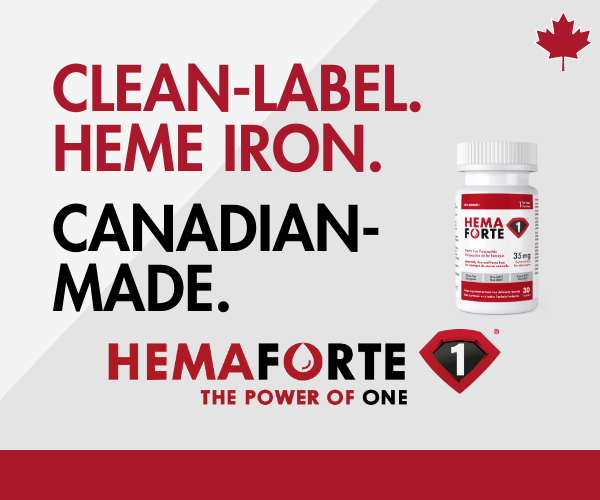Ever wonder why your hair doesn't all grow at the same time or same length, or shed at a certain season each year, like sheep and poodles? This is because each strand of human hair grows in its own random cycle, not according to a set season or cycle like some other animals. Here is a quick lesson on the different parts of your hair and how it grows.
Hair shaft: This is the part of the hair that you see on your head, under your arms, on your legs, in the pubic area, and on your face. It is the part of the hair that lies above the scalp, the part that we style, lather with shampoo, shave with shaving cream, dye, and perm. The hair shaft is made of keratin, a hard protein that is actually dead. In other words, the part of the hair that we see on the surface of our body is not a living structure.
Hair follicle: This is the part of the strand of hair that lies beneath the scalp. Each hair follicle stretches from the epidermis to the deeper layer in the skin, the dermis, and is made up of several layers. At the end of the hair follicle is the bulb, which is the living part of the hair. The bulb is surrounded by tiny blood vessels that nourish the cells of the bulb, causing the hair follicle to grow.
Hair growth cycle: Each strand of hair on our body grows in its own cycle, which is made up of three phases: anagen, catagen, and telogen.
- Anagen is the active phase of hair growth. During this phase, hair grows about 1 cm every 28 days. Some people have difficulty growing their hair beyond a certain length because they have a short anagen phase. On the other hand, people with very long hair have a long anagen phase. The hairs on the arms, legs, eyelashes, and eyebrows have a very short anagen phase, which is why they are so much shorter than the hair on our head (also known as scalp hair). Scalp hair stays in this phase for 2 to 6 years. This is also the phase where colour pigment is made.
- Catagen is a transitional stage, lasting about 2 to 3 weeks, when hair growth stops. About 3% of all hairs are in this phase at any one time.
- Telogen is the resting phase. It lasts about 100 days for scalp hair and longer for hairs on your face, arms, and legs. During this phase, the hair follicle is completely at rest. About 25 to 100 telogen hairs are shed normally every day. This is also known as the "shedding phase."
How long your hair stays in the anagen phase is largely due to what you inherited from your parents. Other factors that influence hair growth include biological sex, your age, and your diet.
All material copyright MediResource Inc. 1996 – 2026. Terms and conditions of use. The contents herein are for informational purposes only. Always seek the advice of your physician or other qualified health provider with any questions you may have regarding a medical condition. Source: www.medbroadcast.com/healthfeature/gethealthfeature/Healthy-Hair-Essentials
The scientific term for hair loss is alopecia. At different stages in your life, you can experience periodic hair loss, which is normal. For example, babies and pregnant women go through a period where they experience thinning of the hair, due to a change or imbalance in hormones. After this imbalance is resolved, their hair will naturally grow back.
Men and women also lose hair or experience hair thinning as they age, which may be related to the levels of testosterone. Male pattern baldness, which can be seen with a receding hairline or patches of baldness on the hair scalp, affects about two-thirds of all men by the time they are 60 years old. This condition is also attributed to levels of testosterone as well as the individual's genetic makeup.
However, there are also lifestyle habits or certain health conditions that can cause hair loss and speed up the natural process of hair thinning.
Lifestyle habits that can cause hair loss include:
- excessive shampooing or blow-drying
- emotional or physical stress
- malnutrition
- smoking (although this is not a direct cause, people who smoke tend to have lifestyles that lead to malnutrition)
- chemical hair treatments or over-styling
These are conditions that you can improve by making lifestyle changes, such as eating healthier, getting the right amount of nutrients, adjusting your hair care habits, and rearranging some things in your life to reduce stress.
Other health conditions that may lead to hair loss include:
- autoimmune conditions such as lupus
- infectious diseases such as syphilis
- cancer treatments, such as radiation therapy and chemotherapy
- scalp infections
- fever
- certain medications
- thyroid disorders
- other skin disorders that can cause scarring
- hormonal factors (childbirth, menopause)
- suffering from a medical condition known as hair-pulling disorder, which is an irresistible urge to pull out your hair from any part of your body (scalp, eyebrows etc.)
Losing hair can be a temporary or permanent problem. Talk to your doctor if you are having problems with hair loss and aren't sure why. Your doctor may run some diagnostic tests to determine the cause of your hair loss. Though hair loss cannot be cured, there are medications, such as minoxidil and finasteride, and other treatments that can promote hair growth or cover hair loss.
All material copyright MediResource Inc. 1996 – 2026. Terms and conditions of use. The contents herein are for informational purposes only. Always seek the advice of your physician or other qualified health provider with any questions you may have regarding a medical condition. Source: www.medbroadcast.com/healthfeature/gethealthfeature/Healthy-Hair-Essentials
Those things you've heard about hair... are they true? Let's square away four common hair care questions.
What causes dandruff and how can I get rid of it?
Dandruff results when the outermost layer of our skin (the epidermis) is replacing old cells with new cells. When the turnover rate of cells being formed is high, dead cells collect on the epidermis of the scalp and clump together to form larger flakes that become obvious. With dandruff, washing with regular or medicated shampoo should be sufficient to control it. Medicated shampoos may contain active ingredients that help slow down dandruff buildup or remove excess flakes. Look for these ingredients to help fend off dandruff:
- pyrithione zinc
- selenium compounds
- salicylic acid
- sulphur
- coal tar
- ketoconazole
Sometimes, dandruff is mistaken for seborrheic dermatitis, a skin condition that causes redness, inflammation, and itchy patches on the head and the body. Seborrheic dermatitis should be looked at by a dermatologist, and it requires different treatment than dandruff.
Is it true that cutting your hair makes it grow faster? Does shaving really cause hair to grow back thicker?
A friend of a friend's friend used to swear that trimming off a baby's eyelash and scalp hair will help it grow back thicker and longer. Don't we all wish that was true! Unfortunately, cutting or trimming your hair will not make it grow back faster or thicker. This may be a comforting fact to know when it applies to the hair on your legs and underarms, but perhaps somewhat disappointing to realize if you've always wanted lusciously long eyelashes or a thick mane. In fact, the thickness of your hair shaft is a matter of genes. But all that cutting and regular trimming isn't wasted, since regular grooming helps keep your locks healthy and protect it from split ends.
Why do some people have greasy hair and some have dry hair?
Within the hair follicle are the sebaceous glands, which produce sebum – the oil that your body produces to condition the hair and skin. At puberty, our bodies make the most sebum, but after this growth spurt, we produce less sebum as we age. This is the reason some people have to wash their hair more often and other people have very dry scalps. Oily or greasy hair can sometimes result from not washing our hair enough, which causes a buildup of dirt and sweat, creating a grimy film. Frequent washing with shampoo should be sufficient to keep your hair manageable.
On the other hand, dry hair is the result of hair that has been damaged – by frequent chemical treatments, bleaching, tying hair too tightly, or simply by having hair grow too long. Long hair is more prone to dryness because it's exposed to harsher conditions for longer periods of time. Dry hair is the result of the core of the hair shaft becoming damaged and porous so it's unable to retain moisture or water. In these cases, applying hair conditioner will help coat the hair shaft and keep the moisture in. Conditioners often contain panthenol, a B vitamin that helps hair remain hydrated, sealing in moisture and giving hair its shiny look and feel.
What can I add to my diet to have healthier hair?
The foods we eat lay the groundwork for all our new hair, skin, and nail growth. For healthy hair growth, try to eat foods that are rich in protein, essential fatty acids, and antioxidants. These include:
- whole grains
- salmon
- oysters
- eggs
- beef
- low-fat dairy
- carrots
- nuts
- poultry
- dark green vegetables
- beans
What this list also tells us is that variety in healthy foods is the key to healthy hair. Vitamin supplements may help, but try to get the nutrients you need from foods whenever possible. You can follow Canada's Food Guide to learn more about eating a well-balanced meal.
All material copyright MediResource Inc. 1996 – 2026. Terms and conditions of use. The contents herein are for informational purposes only. Always seek the advice of your physician or other qualified health provider with any questions you may have regarding a medical condition. Source: www.medbroadcast.com/healthfeature/gethealthfeature/Healthy-Hair-Essentials

